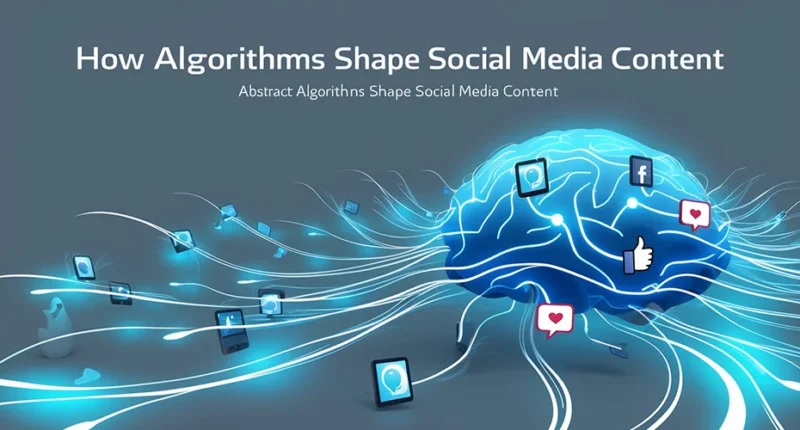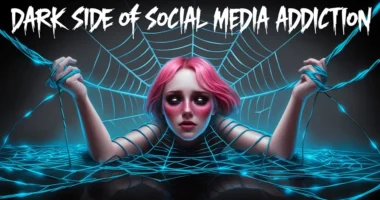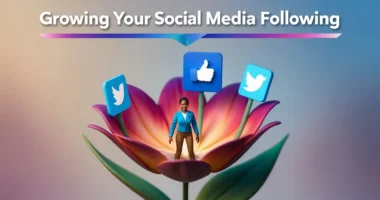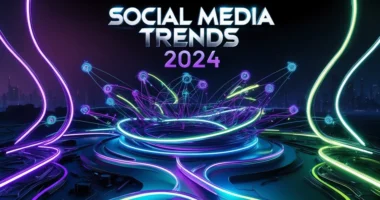Table of Contents
Social media has become a huge part of our daily lives. Whether we’re scrolling through Instagram, watching TikTok videos, or reading posts on Facebook, we spend a lot of time online. But have you ever wondered how the content you see is chosen? This is where algorithms come into play. Algorithms are sets of rules or instructions that decide which posts, images, and videos show up on your social media feed. They shape your online experience in many ways, making your feed personalized and unique to your interests.
What Are Social Media Algorithms?
Social media algorithms are programs designed to determine what content appears in your feed. Instead of showing everything from everyone you follow in a simple, chronological order, algorithms use data to show you posts that are most likely to catch your attention. This data comes from your interactions with posts, such as liking, commenting, sharing, or even how long you spend looking at a particular post. Over time, the algorithm learns your preferences and tailors your feed to match them.
How Do Algorithms Work?
Algorithms work by analyzing a variety of factors to determine the relevance of each post. They track your behavior on the platform, such as which types of posts you engage with most. For example, if you like a lot of dog videos, the algorithm will notice this and start showing you more dog-related content. Similarly, if you comment on fitness posts regularly, you may start to see more workout-related content in your feed.
Algorithms also take into account the popularity of posts. Content that gets a lot of likes, shares, and comments is more likely to be pushed to the top of your feed because the algorithm sees it as engaging and worth your attention. This means that the most viral or trending content often gets more exposure, even if you don’t follow the person who posted it.
Personalizing Content for You
One of the most powerful ways algorithms shape your experience is through personalization. Social media platforms aim to keep you engaged, and they do this by showing you posts you’re most likely to enjoy. This personalized experience is driven by data, such as your past interactions, what accounts you follow, and the type of content you watch or read.
For example, on Instagram, if you spend more time viewing fashion photos, the algorithm will start showing you more fashion-related content. On YouTube, if you watch a lot of cooking videos, the platform will recommend more recipe tutorials. This makes the content feel more relevant to you, increasing the chances that you’ll engage with it, whether that means liking, commenting, or sharing.
Influence on Content Creators
Social media algorithms don’t just affect users—they also shape how content creators post and engage with their audience. Creators often work to figure out what the algorithm favors, which means posting at certain times of the day, using popular hashtags, or creating content that encourages likes, comments, and shares.
Many creators now try to produce content that will grab your attention right away, because algorithms tend to prioritize content that keeps people on the platform for longer periods. This leads to the rise of attention-grabbing headlines, catchy videos, and engaging visuals. Content creators are also encouraged to post consistently to stay visible in followers’ feeds and maintain their audience.
The Impact on Business and Marketing
For businesses, understanding algorithms is crucial to reaching potential customers. Companies invest in social media marketing, trying to make sure their posts are seen by the right audience. The algorithm decides which posts from brands appear in users’ feeds, so businesses need to create content that encourages engagement. For example, running contests, using trending hashtags, or creating interactive posts (like polls or questions) can help brands get more visibility.
Social media ads also rely on algorithms to target specific groups of people based on their interests, behaviors, and demographics. This makes advertising more effective, as businesses can focus their efforts on the people who are most likely to be interested in their products or services.
The Potential Downsides of Algorithms
While algorithms help personalize content and make social media experiences more engaging, they also come with some downsides. One concern is that algorithms can create echo chambers. By showing you content similar to what you’ve already interacted with, algorithms can limit your exposure to new ideas or viewpoints. This can reinforce existing beliefs and make it harder to see a broader range of perspectives.
Another issue is that algorithms can sometimes prioritize content that is sensational or extreme, as it tends to generate more engagement. This can lead to the spread of misleading or harmful information, as posts that provoke strong reactions (even if negative) are more likely to appear in your feed.
Conclusion
Algorithms play a major role in shaping the content we see on social media. By using data to personalize feeds, they help ensure that users are presented with content that matches their interests, keeping them engaged and on the platform longer. However, they also have the power to limit exposure to diverse ideas and can sometimes amplify harmful content. Understanding how algorithms work can help us navigate social media more mindfully, ensuring we stay informed and engaged with content that aligns with our interests and values.











